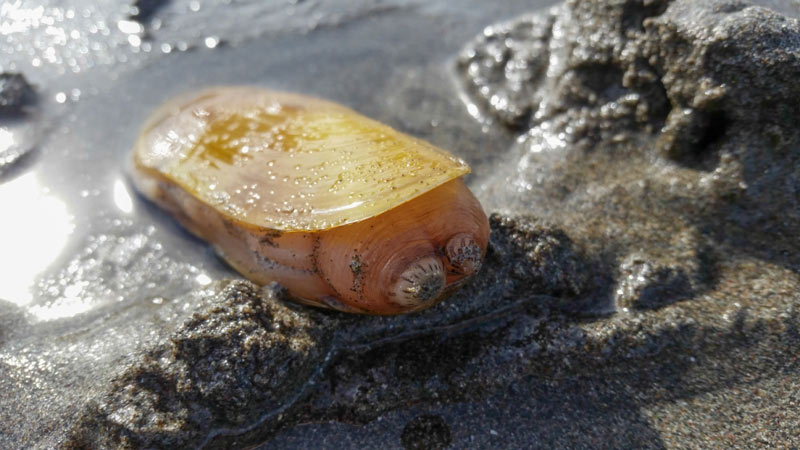Razor Clamming Closed in Two Parts of Oregon Coast
Published 07/08/020 at 3:44 AM PDT - Published 07/08/020 at 4:04 AM PDT
By Oregon Coast Beach Connection staff

Includes exclusive listings; some specials in winter
In Cannon Beach:
Includes rentals not listed anywhere else
In Manzanita, Wheeler, Rockaway Beach:
Some specials for winter
In Pacific City, Oceanside:
Some specials for winter
In Lincoln City:
Some specials for winter
In Depoe Bay, Gleneden Beach:
Some specials for winter
In Newport:
Look for some specials
In Waldport
Some specials for winter
In Yachats, Florence
Some specials for winter
(Seaside, Oregon) – The Oregon coast’s most populated place for razor clams begins its annual conservation closure next week to help ensure the area stays that way. (Photo above courtesy Seaside Aquarium)
Razor clamming on Clatsop Beach will shut down on July 15 and last through September 30. This is the area from Seaside’s Tillamook Head to the mouth of the Columbia River. Also currently closed to razor clamming is a large chunk of the southern Oregon coast, from Cape Arago to the California border. That closure is due to elevated biotoxins.
It’s estimated that 90 percent of the state’s total razor clam population sits on this part of the Oregon coast, some 18 miles of sand that are fed extraordinarily well by nutrients from the Columbia and Necanicum rivers. The area also does not get ripped apart by storms as much, thus leading to a more stable environment for razor clams. This annual closure has been in place since 1967, according to Oregon Department of Fish and Wildlife (ODFW), and it’s helped keep the population going strong by protecting newly set young clams. These baby clams establish themselves each summer.
For those looking to go razor clamming on the Oregon coast there are still other areas available. ODFW suggests the Newport area, especially Agate Beach, the north jetty and South Beach. Other sections of the coastline where they can be found include Cannon Beach, the village of Cape Meares and the sandy parts of Yachats.
“This annual closure prevents disturbing the young razor clams, increasing the chance of good recruitment for future razor clam harvesting,” said Matt Hunter, ODFW’s Shellfish and Phytoplankton Project Leader. “It ensures Clatsop beaches continue to provide a great opportunity for razor clam harvesters, and we thank everyone for respecting this annual closure.”
At this time, all of the Washington coast is closed to razor clamming because of crowding and COVID-19 concerns. Normally, the Long Beach Peninsula area would be a popular choice.
ODFW takes a good look at the population of razor clams during these closure periods, which is called stock assessment. Last year, Oregon wildlife officials found it to be the third highest abundance of clams since these assessments started in 2004. ODFW said this 2020 season has been good as well, with most recreational harvesters obtaining their limits. There are also good signs for the coming season.
“Anecdotal evidence suggests that another juvenile recruitment event occurred which will be quantified by the assessments and could bode well for the next harvest season,” ODFW said.
Bay clam harvesting is currently open along the Oregon coast. All recreational clamming remains closed to nonresidents due to COVID-19 precautions.
The south Oregon coast closure is until further notice. Keep checking the websites below as this could be lifted at any point.
Always check for toxin-related closures before harvesting clams or crabs by calling the shellfish safety hotline 1-800-448-2472. Closures are also noted on ODA’S Recreation Shellfish page and on ODFW’s Recreation Report – Clamming and Crabbing Report.
Oregon Coast Hotels in this area - Where to eat - Maps - Virtual Tours
Cannon Beach Lodging
Nehalem Bay Lodgings
Manzanita Hotels, Lodging
Three Capes Lodging
Pacific City Hotels, Lodging
Lincoln City Lodging
Depoe Bay Lodging
Newport Lodging
Waldport Lodging
Yachats Lodging
Oregon Coast Vacation Rentals
Oregon Coast Lodging Specials

Above: clamming on the Washington coast, photo courtesy Washington Department of Fish and Wildlife. Photo below courtesy Seaside Aquarium.


More About Oregon Coast hotels, lodging.....
More About Oregon Coast Restaurants, Dining.....
LATEST Related Oregon Coast Articles
Through 2 a.m. likely best, but some lights possible through dawn June 1 - 2. Space weather, astronomy
Rare Sperm Whale Stranding on N. Oregon Coast, Was Hit by Boat
Showing up near Gearhart, it will decompose naturally. Marine sciences
Coast Guard Barque 'America's Tall Ship' Coming to Portland Rose Fest, N. Ore...
Portland events: June 5 - 8; Astoria events June 13 - 15. Weather
Bright and Active Arietids Meteors May Hit Pre-Dawn Hours of Oregon, Washingt...
Look to east hour before sunrise and you may catch a show. Sciences, astronomy, weather
Why Now Could Be a Great Week for Spotting Killer Whales on Oregon Coast - Video
A good dozen documentations around Depoe Bay, Newport, Coos Bay, Bandon, Tillamook. Marine sciences
Summer Road Work, Traffic Issues Along Oregon Coast Include Astoria, Garibald...
Some daylight closures include bridges, OR 22, OR 18, OR 26, more. Travel tips. Seaside, Cannon Beach, Lincoln City. Travel tips
Pacific City Oregon Weather, 7-Day Forecasts, Live Conditions, Radar, Webcams...
Updated Constantly: Pacific City, Tierra Del Mar, Oregon Weather, Cams, Buoy Observations, Tides, Warnings - Alerts
Oregon Coast Has World's Oldest Harbor Seal, Celebrating 50 Years Soon
June 3 at Oregon Coast Aquarium in Newport. Newport events
Back to Oregon Coast
Contact Advertise on BeachConnection.net
All Content, unless otherwise attributed, copyright BeachConnection.net Unauthorized use or publication is not permitted















































